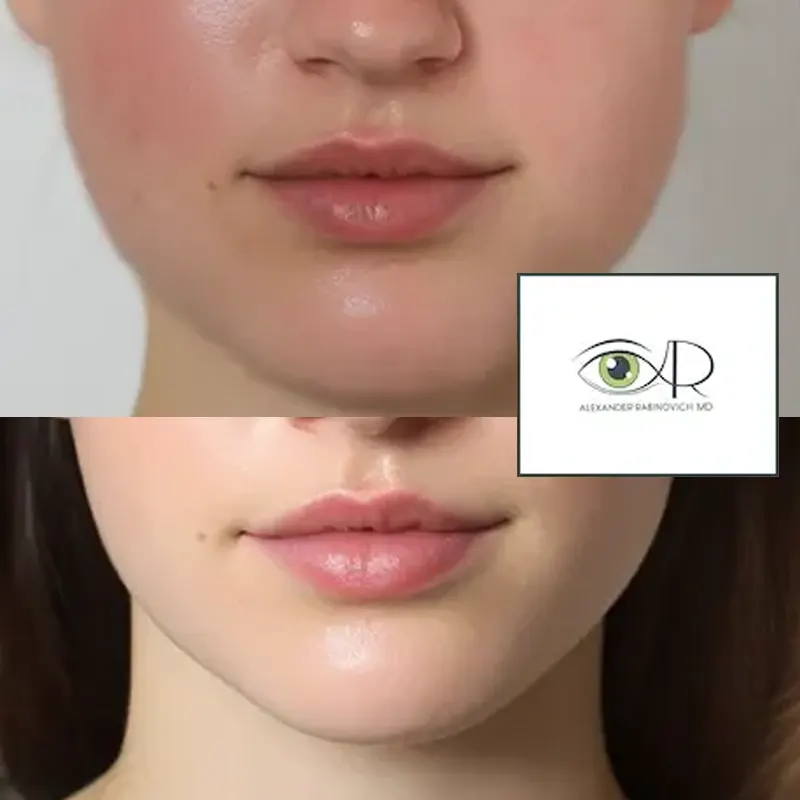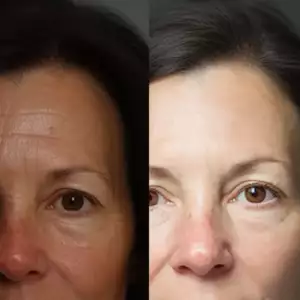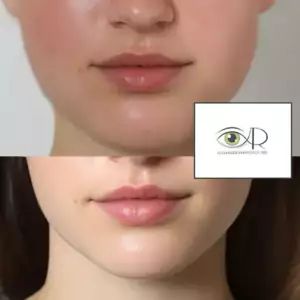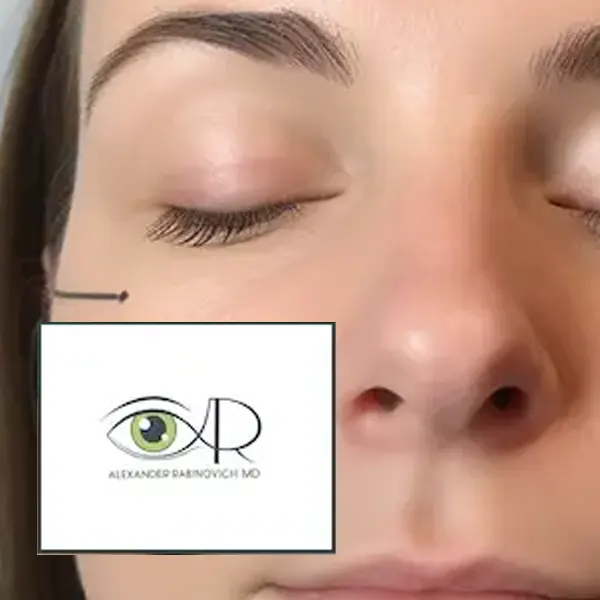
Facial dermal fillers, or dermal substances, are injected into the skin to improve appearance, restore volume and fullness to the face. They are frequently employed to alleviate wrinkles, fine lines, and deep creases while enhancing facial contours and providing definition to cheeks, lips, and chin in a secure manner. These dermal fillers effectively add volume to creased and sunken areas of the face, contributing to a natural fullness in the lips and cheeks and addressing concerns, like dark circles under the eyes. Facial fillers, a widely embraced non-surgical cosmetic treatment, provide a secure method for revitalizing the facial appearance, leading to a more youthful and rejuvenated look. Dermal Soft tissue fillers are substances injected into the skin to add volume. The volume fills wrinkles and lines, restoring a smoother, youthful appearance. They are a widely popular non-surgical cosmetic treatment. Some dermal fillers are used with other skin rejuvenation treatments, such as botulinum toxin injections (Botox shots).
Transform your look with confidence! Answer the call to beauty and experience the art of facial dermal fillers treatment at Dr. Rabinovich's office in Brooklyn, NY. Unveil a new you with a simple yet powerful step – schedule your appointment now! Call Us 1 718 375 69 33
Facial Fillers Purpose
Wrinkle Reduction:

Facial dermal fillers are commonly used to smooth out fine lines,
wrinkles, and folds on the face.
Volume Restoration:

They are used to restore lost volume in areas that
have experienced a loss of fat or collagen due to aging.
Areas of the Face for Face Filler Placement
Types of Facial Dermal Fillers:
Hyaluronic Acid Fillers:
This is the most common type of facial filler. Hyaluronic acid is a naturally occurring substance and can be found in the body.
Facial fillers are a type of dermal filler commonly used in both cosmetic and medical procedures; this approach is designed to improve and elevate the face’s overall appearance. One can increase volume, reduce wrinkles, and accentuate facial features. Hyaluronic acid is an entirely naturally occurring substance in the body. It is crucial in maintaining moisture, promoting skin elasticity, and cushioning joints.
Calcium Hydroxylapatite Fillers:
These fillers stimulate collagen production and provide longer-lasting results.
It is a biocompatible and biodegradable face filler used in aesthetic medicine as a dermal filler. It is a mineral-like compound naturally found in human bones and teeth. CaHA is typically suspended in a gel-like solution for injection when used as a filler. One of the well-known brands utilizing calcium hydroxylapatite is Radiesse and Radiance.
How Hyaluronic Acid Face Dermal Fillers Work:
Natural Substance:
Hyaluronic acid is a sugar molecule naturally occurring in the body. It can attract and bind with water molecules, assisting in the process of maintaining hydration and skin volume.
Synthetic Formulation:
In dermal fillers, hyaluronic acid is synthesized and formulated into a gel-like substance. The most common brands include Juvederm, Restylane, Perlane, and Belotero.
Volume and Structure:
Once injected, the hyaluronic acid filler adds volume to the treated area; one of the benefits of specific cosmetic treatments is that they can help to add volume to the face. They also aim to improve the texture of the skin and minimize the visibility of imperfections, wrinkles and fine lines. It can also be used to enhance facial contours and restore lost volume.
Injection Process:
A trained medical professional injects the HA filler into specific areas of the skin using a fine needle. The injection sites depend on the desired outcome, such as reducing wrinkles, adding volume to lips, or enhancing cheekbones.
Stimulation of Collagen:
Hyaluronic acid fillers provide immediate results and stimulate the production of collagen, a protein that contributes to skin firmness and elasticity. This can lead to longer-lasting improvements in skin quality.
Temporary Effects:
While the results are noticeable immediately after treatment, hyaluronic acid fillers are not permanent. The body gradually absorbs the injected material over time, and the effects typically last from several months to over a year, depending on the type of filler used and individual factors.
How Calcium hydroxylapatite (CaHA) Face Fillers Work:
Composition:
Calcium hydroxylapatite face fillers consist of microspheres of CaHA suspended in a gel carrier, often composed of water and glycerin. The microspheres are made up of calcium and phosphate ions, which are similar to the minerals found in human bone.
Mechanism of Action:
The primary mechanism of action of calcium hydroxylapatite fillers is twofold:
Immediate Volume Enhancemen and Stimulating Collagen Production
Immediate Volume Enhancement:
Upon injection, the gel carrier provides immediate volume enhancement, addressing wrinkles, lines, and folds in the treated area. This is especially useful for nasolabial folds, marionette lines, and other facial contours.
Stimulating Collagen Production:
Over time, the CaHA microspheres work to stimulate the production of collagen. Collagen is a protein that supports and heals skin and plays a vital role in contributing to its elasticity and firmness. As the body absorbs the gel, the microspheres remain in place and encourage the natural formation of collagen, leading to prolonged and sustained results.
Duration of Results:
The effects of calcium hydroxylapatite fillers are immediate and have a lasting impact due to the collagen stimulation. Results can persist for a year or more, depending on factors such as metabolism and the specific area treated.
Application Areas:
CaHA face fillers are commonly used for facial rejuvenation, addressing moderate to severe wrinkles and folds. They are particularly effective in areas with prominent volume loss and collagen depletion, such as the cheeks and midface.
Calcium hydroxylapatite is generally considered safe for use in dermal fillers. It has been approved for cosmetic applications by regulatory bodies in various countries. It’s important to note that any medical procedure can have potential side effects, including redness, swelling, and bruising at the injection site. We strongly advise that people seek advice from a certified professional. It is essential for individuals contemplating this procedure to ask an experienced healthcare professional for advice. Please ensure that you consult with one for any health-related concerns.
Why Choose Dr. Rabinovich in facial filler injection?
Take the first step towards a more radiant you! Schedule your consultation with Dr. Rabinovich today, and let us redefine your beauty with expert procedure face fillers at our exclusive office. Your journey to timeless allure begins here! Call Us 1 718 375 69 33
Cost of Face fillers:
Filler injections are usually $750 for one syringe. Patients usually require anywhere between 1-3 syringes.

Discover the Confidence-Boosting Benefits:
✨ Smooth away wrinkles and fine lines for a refreshed, youthful appearance.
✨ Restore lost volume to key facial areas, enhancing your natural contours.
✨ Enjoy long-lasting results that seamlessly integrate with your unique facial expressions.
Take the first step towards a more radiant you! Schedule your consultation with Dr. Rabinovich today, and let us redefine your beauty with expert procedure face fillers at our exclusive office. Your journey to timeless allure begins here!
The Face Filler Procedure: What to Expect
A. Pre-procedure Preparation:
Before undergoing a face filler procedure, the journey begins with a comprehensive Consultation and Assessment. During this phase, the individual discusses their aesthetic goals with a qualified professional who evaluates their facial structure and skin condition. Precautions and Instructions are then provided to ensure the patient is well-prepared for the upcoming procedure.
B. Actual Procedure Steps:
The face filler procedure involves several key steps. Firstly, the patient is presented with Anesthesia Options to manage any potential discomfort. Following this, the Filler Injection Process commences, where the chosen filler substance is carefully injected into specific facial areas to achieve the desired results.
C. Post-procedure Care:
After the face filler procedure, attention shifts to Post-procedure Care. The patient enters a Recovery Period, during which they follow guidelines provided by the practitioner to optimize healing. The potential Side Effects and Their Management are discussed to ensure that any temporary reactions are addressed effectively, promoting a smooth and satisfactory recovery.







